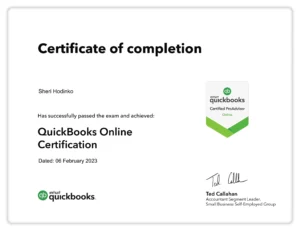
The fundamental accounting equation, also called the balance sheet equation, is the foundation for the double-entry bookkeeping system and the cornerstone of the entire accounting science. In the accounting equation, every transaction will have a debit and credit entry, and the total debits (left side) will equal the total credits (right side). In other words, the accounting equation will always be “in balance”. When the total assets of a business increase, then its total liabilities or owner’s equity also increase. Like any mathematical equation, the accounting equation can be rearranged and expressed in terms of liabilities or owner’s equity instead of assets.

The accounting equation And how it stays in balance

Identifying killer differentiators to stand out from the competition, 3. Fortunately, you don’t have to be a math whiz to be a successful entrepreneur. Even though running a business requires solving occasional financial equations, they’re not complex — and you’re never more than a click away from a calculator. Here are eight of the most common accounting equations and how to solve them.
Real-World Examples of the Expanded Accounting Equation
To calculate the accounting equation, we first need to work out the amounts of each asset, liability, and equity in Laura’s business. For every transaction, both sides of this equation must have an equal net effect. Below are some examples of transactions and how they affect the accounting financial accounting equation equation. Journal entries often use the language of debits (DR) and credits (CR). A debit refers to an increase in an asset or a decrease in a liability or shareholders’ equity. A credit in contrast refers to a decrease in an asset or an increase in a liability or shareholders’ equity.
- 11 Financial is a registered investment adviser located in Lufkin, Texas.
- A business may take out a bank loan of 5m, cash will increase by 5m and liabilities will also increase by 5m.
- The income statement is also referred to as the profit and loss statement, P&L, statement of income, and the statement of operations.
- Financial statements generated through financial accounting are used by many parties outside of a company, including lenders, government agencies, auditors, insurance agencies, and investors.
- At the same time, Capital increased due to the owner’s contribution.
- Current assets include cash and cash equivalents, accounts receivable, inventory, and prepaid assets.
Financial Statements
- These guidelines dictate how a company translates its operations into a series of widely accepted and standardized financial reports.
- To make the Accounting Equation topic even easier to understand, we created a collection of premium materials called AccountingCoach PRO.
- To calculate the accounting equation, we first need to work out the amounts of each asset, liability, and equity in Laura’s business.
- However, each partner generally has unlimited personal liability for any kind of obligation for the business (for example, debts and accidents).
- Before explaining what this means and why the accounting equation should always balance, let’s review the meaning of the terms assets, liabilities, and owners’ equity.
The investment by the shareholders is structured as a share issue of 10,000 shares, issued at 5.00 each. The nominal (or par) value is 1.00, and the accounting rules require the par amount to be reported separately from the additional above par. The additional amount above par is reported in an account called additional paid-in capital or share premium. During the month of February, Metro Corporation earned a total of $50,000 in revenue from clients who paid cash. The 500 year-old accounting system where every transaction is recorded into at least two accounts.
Liabilities
The balance sheet is the linchpin of the structural integrity of the three key financial statements. It must always balance and the fundamental accounting equation, assets equals liabilities plus equity, provides the basis for the recording of all business transactions. Each transaction must be recorded so that the equation is in balance https://www.bookstime.com/ once the processing has taken place. If a company keeps accurate records using the double-entry system, the accounting equation will always be “in balance,” meaning the left side of the equation will be equal to the right side. The balance is maintained because every business transaction affects at least two of a company’s accounts.
The accounting principles used depend on the business’s regulatory and reporting requirements. Companies and organizations often have an accounting manual that details the pertinent accounting rules. Work opportunities for a financial accountant can be found in both the public and private sectors. A financial accountant’s duties may differ from those of a self-employed accountant who works for many clients preparing their accounts, tax returns, and possibly auditing other companies.

We could also use the expanded accounting equation to see the effect of reinvested earnings ($419,155), other comprehensive income ($18,370), and treasury stock ($225,674). We could also look to XOM’s income statement to identify the amount of revenues and dividends the company earned and paid out. In double-entry accounting or bookkeeping, total debits on the left side must equal total credits on the right side.
